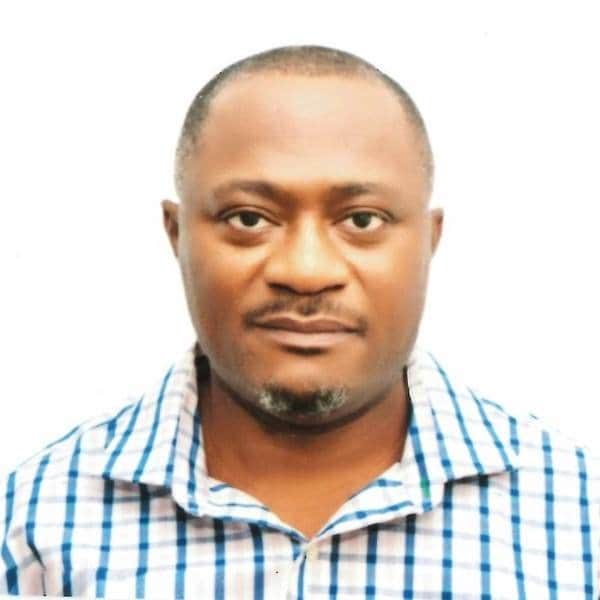Saved By What I See By Akin Akinbodunshe
Isn’t it amazing that we all might have eyes, but not everyone truly sees? Helen Keller alluded to this when she said, “The only thing worse than being blind is having sight but no vision.” She knew what blindness was, herself being a deaf-blind person, but that did not limit her. That did not stop her. Where others saw limitations, she saw opportunities. She saw beyond the physical into the land where all things come.
She went ahead to be the first deaf-blind person to earn a Bachelor of Arts degree. She was an author, political activist, and lecturer. At the same time, President Franklin Delano Roosevelt (FDR) was in office, there where handicaps on the streets, not too far from the White house. They saw themselves as invalid in need of mercy and pity from others.
Some of these were better than FDR in the functions their physical bodies could perform. Yet they were on the streets begging, while FDR was seating as the most powerful man on earth then. Where was the difference? The difference was in what each saw while looking at the same thing(s). One saw opportunities; others saw limitations.
Guess what, they all, just like we all have the same access to the same God. God was not, and is not the differentiating factor. He is a constant in our consideration. Neither did God move on behalf of one as against the other. He was equally available to them all, just as He is available to us all today. What made the difference? What each saw and the resolve to press towards what they saw.
FDR was infected with polio while on official assignment as Assistant Secretary to the Navy, under President Woodrow Wilson, during the first World War. He took time off public life to pursue treatment for this. Rather than abate, the sickness progressed till he lost the use of his legs. He tried several conventional and non-conventional treatments, but all to no avail.
With all his aces out, as it pertains to healing, He did not allow himself to be powerless. He returned to public life by contesting for and winning as Governor of New York in 1928. How did he go about that? He focused on what he could do, not on the things he could not. He knew what was required to win, and he harnessed his strengths to meet and exceed them, despite his limitations.
How so much he proved the teachings of Peter Ferdinand Drucker, the famed Austrian-born American management consultant, educator, and author. Drucker taught, “A person can perform only from strength. One cannot build performance on weakness, let alone on something one cannot do at all.” Keller and FDR looked at themselves, and rather than see their limitations; they saw their strengths and what it could avail them out of life.
FDR went on to not only becoming the Governor of New York but also the 32nd President of the United States of American and the only one to have ever been elected four times to that position. No one has even ever been elected thrice. He led the country out of the great depression, offering the country what is termed “The New Deal.” He is amongst America’s three greatest presidents. The other two being George Washington and Abraham Lincoln.
So, never forget, it is never what you look at that is important. What makes a difference between life and death, success and failure, promotion or demotion, Heaven or Hell, is what you see. What are you seeing? What is your vision? Are blown about by all the gossips floating around? Can you see the invisible? Is your intuition alive? Do you hear from Infinite Intelligence?
We are all influenced by our paradigms. We see life and things in general through these lenses. The foundations of these paradigms were built without our consent, ever before we got the opportunity to make our own decisions. There was no filtering of the information our environment fed us. Receiving of stimuli started from conception while we were yet in our mother’s womb.
The ancient Greeks understood this, so they exposed pregnant women to beautiful imageries. The principle is similar to that used by Jacob with his father-in-law’s flock. Call it ancient wisdom, but it is still so very potent today. Our frontal cortex, the rational part of our brain, the gateway of our mind only gets fully formed at about five years of age. Then, and only then does a child begin to ask a series of questions. Why? The frontal cortex is reporting to work.
It is, however, seemingly, close to six (6) years behind in coming. All that our subconscious mind receives in the time-space between conception, and when our gate is operation form the core of who we are, the way we see and respond to the world. They form the core of who the child is and grows to become, for they are the primary window through which the child judges and sees life. They form the child’s paradigm.
Left unchecked, it becomes our autopilot mode, the prison we have decided by which to run our lives. Our paradigm gives rise to the things we will generally do instinctively. The instinct can range anywhere from an animalistic to a human reaction, depending on the nature of our paradigm, and the life experience that makes them up.
The comforting point is that we don’t have to be prisoners of our instinct, history, or biology. We are human beings. We can change. We can grow. We can become, whatsoever it is we set our minds on, either literally or metaphorically. We can train ourselves to see things in the way we so choose. We can learn to see things in the way that empowers us and move us in the direction of our dreams and vision.
The choice is always ours to make.


